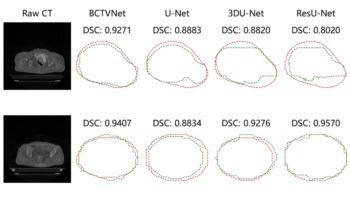Bets between physicists are not unusual. Stephen Hawking and Kip Thorne, for instance, had a famous bet about the existence of black holes, with the winner receiving a subscription to the magazine of their choice - Playboy for Thorne and Private Eye for Hawking. Now a US physicist, Carlton Caves from the University of New Mexico in Albuquerque, has challenged Richard Gott, an astrophysicist at Princeton University to a $6000 bet to prove that Gott's applications of the Copernican principle - the assumption that we live in an unexceptional time and place - are correct. The bet appears in a paper Caves submitted to Contemporary Physics and involves predicting the lifetime of a group of dogs. However, Gott believes that the bet is biased against his theory and besides, he says, "I don't do bets."
The disagreement stems from a paper Gott published in Nature several years ago and recently discussed in the New Yorker magazine. In this paper Gott proposed a formula that suggests that by knowing how long an object, person, species or event has existed for, you can make a generalised prediction for how long it will survive in the future. “This Copernican principle is one of the most successful principles in science,” Gott told PhysicsWeb. According to Gott, the Copernican principle can be used to show that there is a 95% chance that the future duration of the human species, which has existed for 200,000 years, is between 1/39 and 39 times 200 000 years. “In other words,” says Gott, “the human species will probably die out sometime between 5100 and 7.8 million years from now.”
But Caves believes that by making such a prediction, Gott has thrown out rational, scientific inquiry and replaced it with a single, universal statistical rule. Caves argues that the exceedingly long time-scales used in the predictions make the theory worthless. “Anyone could have written down such a long time-scale and achieve the same ‘success’,” he says.
To challenge it, Caves surveyed all his colleagues and students in the physics department and asked them how many of them had pet dogs. He found 24 dog owners who provided Caves with details about the name, age, and breed of the dogs. Gott’s rule, he says, predicts that there is a 50% chance that each dog will survive to twice its present age. Caves then picked 6 of the oldest dogs (over 10 years old) and offered to bet Gott $1000 for each dog at odds of 2:1 in Gott’s favour, that they would not reach twice their age. “You can tell whether someone really believes his probabilistic predictions by challenging him to bet,” says Caves. “The fact that Gott won’t accept my bet means that he doesn’t believe his own predictions in this situation. Thus, he has already conceded the main point of my paper: his rule is not the universal rule that he pretends it to be.”
However, Gott argues that the bet is biased, and that his theory does work if a dog is randomly picked from the sample. “I think by the time all 24 dogs are dead my 95% Copernican formula will have worked in approximately 95% of the cases,” he says. “I think it will do well.”
Caves remains unconvinced. “I would be happy if he acknowledged that his rule is restricted to special circumstances and quit spewing out predictions for any phenomenon that is presented to him,” he says.
PhysicsWeb exclusive: Gott’s response



